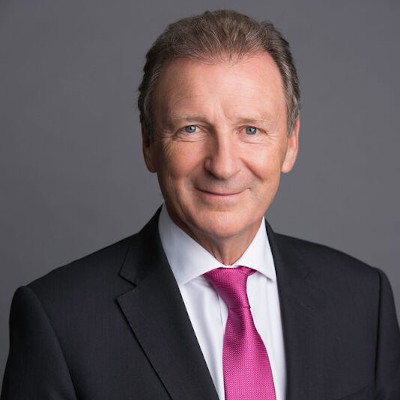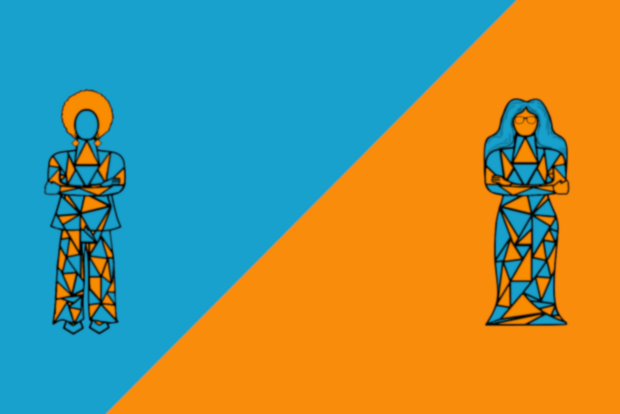Best in class: a more inclusive approach to diversity

To date, the diversity agenda has largely focused on race, gender, sexuality and disability – but it’s just as important that civil service workforces include staff from different social classes, income groups and geographical regions. Adam Branson reports on the various challenges facing the UK, New Zealand and Estonia as they try to make their leadership cadres truly representative
Over recent years, many civil services have made great strides in promoting equal opportunities within their workforces and management cadres – dismantling the barriers that have long slowed the recruitment and promotion of women, ethnic minorities, and LGBQT or disabled people. But there is another key facet of diversity: that of social class.
Class may be harder to define than the designated ‘protected characteristics’, but all the arguments for strengthening diversity are just as potent in this field. It’s important not only that public organisations lead the way on tackling discrimination, but also that – employing people representing all the the communities they serve – they’re equipped with the insights and expertise required to build effective policies and inclusive services.
The task of broadening ‘social diversity’ looks very different around the world.
While the UK’s civil service clearly retains the imprint of the British class system, for example, in New Zealand socio-economic background is largely tied to ethnicity. In Estonia, with its Russian-speaking minority, it is language that comes to the fore. So each country has developed different solutions to the challenge of broadening the social mix among leaders and managers; and each has something important to teach about what works.
Social class in the UK
The vast majority (72%) of senior civil servants in the UK come from a privileged background, according to research from the Social Mobility Commission, an independent body that promotes, investigates and advises on social mobility. That leaves just 18% of the senior workforce coming from a disadvantaged background. Indeed, one in four of senior civil servants were educated at an independent, fee-paying school, according to the report, which was published in May this year and based on an analysis of more than 300,000 officials. That tracks much higher than the UK national average: 6.5% of children attend private schools, according to the Independent Schools Council.
The report also found stark differences between departments’ social makeup. Senior civil servants who work in powerful departments, largely based in London, are overwhelmingly from advantaged backgrounds. For example, just 12% of senior civil servants at HM Treasury come from disadvantaged backgrounds, compared with 45% of those at similar grades at the Department for Work and Pensions (DWP), which has outposts across the country.
“Civil servants from disadvantaged backgrounds are significantly under-represented in the [civil service] and even if they do ‘get in’ they can struggle to ‘get on’,” said Steven Cooper, interim co-chair of the Social Mobility Commission, when the report was published.
When former UK Cabinet secretary and head of the civil service Gus O’Donnell first moved from academia to the Treasury, he tells GGF, he quickly realised that this lack of representation among senior ranks isn’t just unfair; it’s also an impediment to effective government.

Former UK Cabinet secretary
“I was aware that there was there was a need to be more welcoming to people from outside; to get people from a wider range of backgrounds. And that was quite tough,” says O’Donnell, who – born into an Irish family in South London – was the first person in his family to go to university.
A focus on entry points
Recruitment was part of the problem, according to O’Donnell. “The entry criteria were very biased towards graduates and, in particular, graduates who had the sorts of skills that were at that point valued. Obviously, people were tending to hire people like themselves,” he said. “These things are quite self-reinforcing. You end up with an organisation that’s quite stable but isn’t dynamic.”
During his tenure, O’Donnell tried to change the way in which civil servants were recruited. “I tried to expand the kinds of places we looked [for recruits],” he says. “I remember going up to places like [former polytechnic] Oxford Brookes for careers fairs to find those people that have struggled through life but got to those universities. They were diamonds waiting to be picked up. It was about trying to find those people who had battled against the odds and with great innate abilities.”
In part, the point was to recruit people who had some experience of using government services. “It was important to find people who have empathy with people who use public services,” says O’Donnell. “If everyone comes from a background where no one in your family uses public services, there is something missing. We gained a lot by having people who’d been in very different contexts and had very different social backgrounds.”
Victoria Jones, equalities officer at civil service managers’ trade union the FDA, agrees that broadening social diversity can improve policymaking. “If you have a more diverse group of policymakers – so people with different lived experiences, people from outside of the South East [of England] and who didn’t go to certain universities – then the policy that you’re creating for the general public is going to be more appropriate,” she says.
O’Donnell believes that civil services now need to look beyond graduates to attract an even greater range of talent and experience. “I think we should be thinking more about a broader range of skills,” he says. “I think many employees are now realising that it’s a lazy way of thinking if it’s all about university degrees. There’s quite a big range of talent out there and some of those are best nurtured at university, but some are nurtured in other ways.”
Ethnicity as a barrier to diversity
But the problems caused by class in the British system are not necessarily seen in other parts of the world. “It doesn’t really resonate in the same way in New Zealand,” says Hannah Cameron, deputy commissioner at New Zealand’s Public Service Commission and an émigré from the UK.

In New Zealand, she says, the biggest challenge is promoting equality between the 75% of the country’s population with a European heritage and the Maori and Pacific Islander citizens. Here, socio-economic factors meet ethnicity: “Some of the poorest areas of the country are the rural North, which has got the highest Maori population. There is a connection between the questions of ethnicity and socio-economic status,” she explains. “Being concerned about which schools people went to and which universities and so on is probably not such a strong driver as it would be in the UK.”
New Zealand has improved some areas of representation across its civil service. “The big focus was on women initially – and gender in the last few years,” says Cameron. “We reached a point a couple of years ago where we have equal numbers of women at the most senior level.”
“Now, the focus is really around making sure we have the pipelines of people working through their careers coming from different kinds of backgrounds, with a particular focus on ethnicity,” she adds.
In Cameron’s experience, leadership has been an essential ingredient for previous efforts to promote diversity. “Two years ago, we appointed two of the [departmental] chief executives… to be the leads on diversity and inclusion,” says Cameron. “They have developed a programme of mandatory things that every agency must do, such as training and development and supporting employee-led networks, while at the same time tracking the data around diversity.”
Dual-language diversity
Estonia’s history has left it with its own set of social divisions and disadvantaged groups. “I think one of the very few positive aspects that were left by the Soviet Union’s occupation was that we didn’t inherit any class system,” says Taimar Peterkop, state secretary in the Estonian government. “After regaining our independence 30 years ago, everybody was in the same position.”

However, the newly-free country did inherit another factor that has created challenges. “The other very important legacy that we are struggling with from the Soviet occupation is a large Russian-speaking minority – who are, generally speaking, poorer – and how they are represented in the government structures and in society,” says Peterkop.
“That is something that we need to put a little bit more effort into,” he concedes. “Around 12% of the civil service have Russian as their first language, but considering that they are around 25% or 30% of the population there is still room for improvement.”
The challenges around improving social diversity vary significantly around the world, but there is a broad consensus that building a civil service that reflects its population is a crucial goal – and that to do so, leaders must look through the lenses of income, class and geography as well as ethnicity, gender, sexuality and disability. Over recent years, many countries have made huge progress on these latter characteristics; if they can repeat that success within the more amorphous field of class and income, then future generations of government leaders will be far more connected to – and representative of – the communities they serve.





















